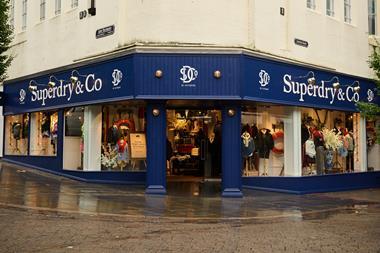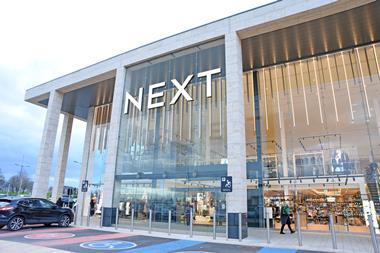The all-American shopping mall, once that hub of social activity and a destination for hordes of young teenagers, is now an altogether less cheerful place. A staggering 144,000 shops are expected to close in the US by the end of this year. While landlords scrabble around for new tenants, many have resorted to using the front of empty stores as advertising space. You can practically hear the tumbleweed blowing.
Things may be bad here but hop across the Atlantic and the retail scene is nothing short of calamitous. Gilbert Harrison, chairman of investment bank Financo, sums it up succinctly: “It’s a bloodbath.”
After all, the US is the epicentre of this global economic disaster. This is the country running bus tours for would-be house buyers to peruse entire neighbourhoods of repossessed homes.
So just how much is retail suffering in the most powerful country in the world?
Brooks Brothers owner Claudio del Vecchio says: “In the last three or four months especially, it has got worse. With the election, people have been preoccupied – they have been reading all the news and the TV, and while they are doing that they are reading more and more about the economic downturn.”
Last week, Harrison had a meeting with some of the biggest names in the sector. He says: “No one has seen anything like this.” New York consulting firm WSL Strategic Retail chief executive Wendy Liebmann says: “The slowdown has become more of a fast down,” and Deloitte US head of retail Stacy Janiak adds: “Retailers are entering unprecedented territory.”
US retailing casualties
Among the casualties littering the land of stars and stripes is 600-store homewares retailer Linens ’n Things – its white web site scarred by a garish sign on its home page saying: “Going out of Business! All items up to 30% off.” Mid-market department store chain Mervyn’s, which operates 149 stores in California and the Southwest US, has also folded. Others to have filed for bankruptcy include family-owned department store chain Boscov’s, 270-store fashion retailer Steve & Barry’s and 180-store high-end electronics and gift company The Sharper Image. The list goes on.
Countless more retailers throughout the US are halting expansion plans and closing underperforming stores. When the times were good, retailers bought more real estate than they could afford. Janiak says: “The general consensus is the US has been over-stored but consumers kept spending. Because they were doing that it was hard to argue, so retailers kept opening more and more sites. Now we’re seeing a slew of store closures and we’ll see more in 2009.”
Harrison says: “If you look up Madison Avenue, it’s more empty than I’ve seen it in years, and what’s more, landlords are still in denial. They’re still trying to charge the same rents that they were before all this started.”
All around them, US shoppers are witnessing the demise of shops that can’t be filled and the psychological effect is profound. Liebmann says: “The mood is angry and confused.”
In two weeks, WSL Strategic Retail publishes a report – How America Shops in Crisis. Its survey of 1,500 shoppers revealed 54 per cent of female shoppers are avoiding even setting foot in places where they will be tempted to spend too much – malls, department stores, even outlet malls and mass merchandisers.
The US did experience a recession after 9/11 in 2001, but the crucial difference between now and then is that, seven years ago, people spent their way out of it. Today, people are too terrified to do that.
Harrison says: “Consumer confidence is so low, people just don’t know what to do. It’s a combination of the real situation out there and the press coverage, which has scared customers so much they are afraid to spend anything.”
Analysis of credit card transactions released by Mastercard Advisors last month revealed US shoppers spent less in every category in September than they did in the same month last year: 5.5 per cent less on apparel, 13.3 per cent less on furniture and 13.8 per cent less on electronics and appliances.
Sales across the board are floundering. At JC Penney, annual like-for-like sales for the year to September slumped 12 per cent. At Nordstrom they fell 9.6 per cent.
The previously resilient luxury market is also preparing itself for a fall. Liebmann says: “Even the high-end specialty retailers that were supported by the most affluent are now struggling.” Del Vecchio agrees. “Now no one is protected,” he says.
Sales at upscale dressmaker Nicole Miller have fallen for the first time in decades during the high season for charity balls and society parties. Chief executive Bud Konheim told the New York Times: “Financial stress is trumping what-to-wear stress. That is a big worry, because the second something gets more important than what to wear to the party, we have a very hard job.”
Jewellers Tiffany and Bulgari are considering halting future store openings, while Dior may close some of its boutiques in smaller US cities. Janiak says: “Luxury is coming home to roost. Its resilience in the last 12 months has been attributable to a lot of foreign consumers coming here to shop, but now the dollar is gaining strength, there’s less of that too.”
When you look at the sales of luxury stores in the prime tourist spending hot spots, the significance becomes apparent. Goldman Sachs estimates that Saks, for instance, gets about 20 per cent of its total sales from its New York flagship.
Youthful indulgence curbed
While UK retailers are still benefiting from the carefree youth market’s indulgent shopping sprees, not all US retailers are so lucky. Abercrombie & Fitch’s like-for-like monthly sales figures for September dropped 14 per cent. The fact that so many teenagers drive in the States is thought to be having an impact; rocketing fuel prices are eating into their allowances, but they’d rather spend their cash on their independence than on new clothes.
At a New York retail conference at the beginning of October, Michael W Rayden, chairman and chief executive of teen girls retailer Tween Brands, said: “As I travel around the country and listen to mums and little girls, it is amazing how much even these 10-year-old girls are aware something is going on. Mum is saying, ‘I can’t afford that’.”
Janiak at Deloitte says: “Parents aren’t capable of continuing to support their children.” Deloitte commissioned a back-to-school survey with 5,035 people and found not only did parents say they will spend less, they expect their children will do the same. Nevertheless, there are some youth chains such as Hollister and Buckle that are posting strong sales.
In general, the lucky thriving few are the discount membership clubs such as BJ’s Wholesale Club and Costco Wholesale. In October, the latter announced that quarterly revenue to the end of August rose 7 per cent from US$20.48 billion (£12.69 billion) to US$23.1 billion (£14.31 billion) as consumers shopped for bargains. Even then, however, it said consumers were shying away from more costly items such as furniture and jewellery, making a beeline for its food and sundries lines. And not all of the US’s discount retailers are entirely immune. Walmart rival Target’s like-for-likes fell 3 per cent in September.
Nationwide, US retailers are desperately slashing prices to lure shoppers. Home Depot has said it is cutting prices on 1,200 items by as much as 50 per cent. Home furniture retailer Restoration Hardware has offered shoppers US$100 (£62) off purchases of US$400 (£248) or more.
Footwear retailer Steve Madden has been even more direct, producing poster adverts depicting a declining stock chart and the slogan “Sell stocks, buy shoes”, while knocking 20 per cent off all products. But, warns Harrison: “Discounting is a short-term fix. It can’t solve the problems. The name of the game is market share. If retailers don’t focus, they’ll die.”
Del Vecchio says US business operations are evolving: “Normally during recession a retail company will adjust its buying plans. This time it’s life-changing. No one is expecting their business to go back to usual. Everyone has lived in a dream world for 25 years. We’ve produced more than we could buy, we’ve spent more than we could earn. People will be leading totally different lives after this is over and retailers here are adjusting to that way of thinking.”
So what is the outlook? Janiak tentatively envisages a potential – albeit small – improvement. “Typically, there is usually a sales lift after an election, so closer to Christmas we might see some settling down.” But, she adds: “At the moment it’s still very pessimistic.”
Most analysts expect discounters and wholesalers to thrive in the coming months. As in the UK, those retailers that will pull through are those that have managed their operations well and have good cash flow.
But one of the most striking differences between retail sectors in the UK and the US is that those who can still boast strong sales are very hard to find. US retailers wait with baited breath to see whether the government’s US$700 billion (£434 billion) rescue plan boosts spending. In the meantime, there is nowhere to hide. For those that survive, it will never be quite the same again.
What US retailers are saying
“If [a purchase] can be put off, it will be put off.”Costco chief financial officer Richard Galanti
“This is the toughest retail environment I’ve been a part of.”Nordstrom president of stores Erik Nordstrom
“We’re not naive about the sentiment that’s out there.”JC Penney chairman Myron E Ullman III
“We are not immune.”Ebay president John J Donahoe
“Let’s be honest. Business is difficult.”Bloomingdale chief executive Michael Gould


























No comments yet